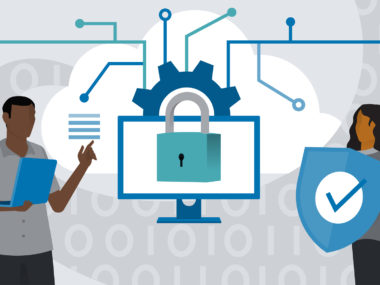We can all agree on how the Internet of Things (IoT) brings so much comfort to our homes. By simply using smart home devices that connect to the internet, you are more than able to have your coffee ready by the time you get up.
Also, the fact that you can control the temperature and lights of your home, adds a huge amount of convenience to your daily life. There’s no doubt that a connected home makes lives more efficient and easier.
That said, with an increase in internet-based devices, you can also expect an increased level of risk of being a potential target to cyberpunks/hackers. The more connected devices you have at home, the more your personal data is at risk of being leaked, as all of these devices are data collectors.
These hackers can not only steal but also misuse your personal data, banking details, and further take control of the smart cameras and microphones you have installed at home, to spy on you and your loved ones.
In other words, if you have smart devices such as smart TVs, speakers, thermostats, security cameras, and other devices, your security and privacy can be compromised. Because, in essence, these devices act as entry points with unsteady security that may leave you prone to cyber-attacks.
To cut it short, if you are investing in smart home devices, it’s important that you also invest time and energy in securing your smart home. Here are five ways to get you started with that.
Create a Secured Wi-Fi Network
If you weren’t aware, your Wi-Fi router is the main doorway leading to your smart home. This makes it necessary for you to purchase a router from an established and reputable brand. Stay mindful to follow the manufacturer’s instructions when changing the network’s name and its default password.
Never stick with the router’s default name, as it’s usually made up of its model. If people were to discover the make and model of your router, they might also be able to look up the default login and password to attain access to your home Wi-Fi network.
Choose a network that’s unique and doesn’t give away your personal details or location. No one would want their Wi-Fi video doorbells to be hacked, all because of a common network name and password. You should also consider keeping your network is hidden from view, an option that is easily found in your router’s settings menu.
There’s also the possibility of creating a second Wi-Fi network just for your smart home devices. Many Wi-Fi routers allow you to create more than one network, each with a different name and password. By doing so, it will make it almost impossible for a hacker to get into your smart home devices’ network.
Use Extremely Strong Passwords
Never underestimate the importance of your passwords. It’s incredible that the old-fashioned, humble passwords system is in fact the main line of defense that protects the most high-tech devices.
That is why we are emphasizing that passwords should be taken seriously! Apart from your router’s password, there are some other areas where the importance of having an extremely strong password is crucial.
For example, all IoT devices require an account to be created, which then you sign in to control and manage the devices. These smart devices often have mobile apps where you will need to use your login credentials.
Now, it’s very important to create passwords for each IoT device account and app that are unique and different than usual. You ask why? Well, so that if one device’s password is compromised, others are still safe.
Of course, you will have to remember so many passwords. If you decide to have them written down, make sure to keep that note safe. You could also use a password management tool to store your password and also create unique ones.
Enable Multi-Factor Authentication
If you have used online banking before, you must be aware of what multi-factor authentication refers to. Multi-factor authentication adds an extra layer of security that’s much more than a mere password.
With the use of two-factor (2FA), each time someone tries logging in to your IoT device, they will need to provide additional proof that identifies them to you. This proof usually comes in the form of you receive a one-time pin (OTP) or verification code sent to your email address or mobile phone.
Most IoT devices use multifactor authentication features by default, but for those that don’t, you should enable this feature via Google Authenticator ASAP.
Use High Level of Encryption
Finally, choose the highest level of encryption, which is usually WPA2, but WPA3 is coming soon too. If your Wi-Fi router only supports WEP or WPA protocols, perhaps it’s time for a router upgrade.
Conclusion
You can purchase the best IoT devices from the most reputable brands, and yet, at the end of the day, the security of your smart home is still in your hands. Do follow the above-mentioned tips to make sure your smart home is secured.





